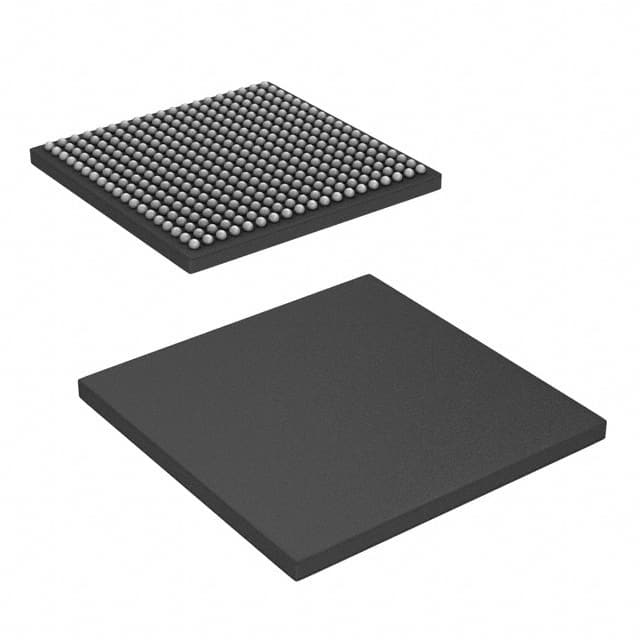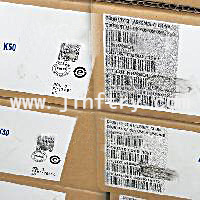What is TMS320DM6446BZWTA,TMS320DM6446BZWTA Datasheet


What is TMS320DM6446BZWTA
Texas Instruments Part Number TMS320DM6446BZWTA(Embedded - DSP (Digital Signal Processors)), developed and manufactured by Texas Instruments, distributed globally by Jinftry. We distribute various electronic components from world-renowned brands and provide one-stop services, making us a trusted global electronic component distributor.
TMS320DM6446BZWTA is one of the part numbers distributed by Jinftry, and you can learn about its specifications/configurations, package/case, Datasheet, and other information here. Electronic components are affected by supply and demand, and prices fluctuate frequently. If you have a demand, please do not hesitate to send us an RFQ or email us immediately [email protected] Please inquire about the real-time unit price, Data Code, Lead time, payment terms, and any other information you would like to know. We will do our best to provide you with a quotation and reply as soon as possible.
TMS320DM6446BZWTA Specifications
- Part NumberTMS320DM6446BZWTA
- CategoryEmbedded - DSP (Digital Signal Processors)
- ManufacturerTexas Instruments
- DescriptionIC DGTL MEDIA SOC 361NFBGA
- PackageTray
- SeriesTMS320DM644x, DaVinci™
- TypeJinftrytal Media System-on-Chip (DMSoC)
- InterfaceASP, EBI/EMI, Host Interface, I²C, SPI, UART, USB
- Operating Temperature-40°C ~ 105°C (TC)
- Mounting TypeSurface Mount
- Package / Case361-LFBGA
- Supplier Device Package361-NFBGA (16x16)
- Clock Rate513MHz DSP, 256.5MHz ARM®
- Non-Volatile MemoryROM (8kB)
- On-Chip RAM160kB
- Voltage - I/O1.8V, 3.3V
- Voltage - Core1.20V
- Package_case361-LFBGA
Application of TMS320DM6446BZWTA
TMS320DM6446BZWTA Datasheet
TMS320DM6446BZWTA Datasheet , Tray,TMS320DM644x, DaVinci™,Jinftrytal Media System-on-Chip (DMSoC),ASP, EBI/EMI, Host Interface, I²C, SPI, UART, USB,-40°C ~ 105°C (TC),Surface Mount,361-LFBGA,361-NFBGA (16x16),513MHz DSP, 256.5MHz
TMS320DM6446BZWTA Classification
Embedded - DSP (Digital Signal Processors)
FAQ about Embedded - DSP (Digital Signal Processors)
-
1. What is embedded DSP?
Embedded Digital Signal Processor (EDSP) is a processor specially used for signal processing. It has been specially designed in terms of system structure and instruction algorithm, and has high compilation efficiency and instruction execution speed. Embedded DSP processors are good at high-speed implementation of various digital signal processing operations, such as digital filtering, spectrum analysis, etc.
Embedded DSP processors have been specially designed for system structure and instructions, making them suitable for executing digital signal processing algorithms, with high compilation efficiency and high instruction execution speed. This special design includes the optimization of DSP hardware structure and instructions, so that it can efficiently handle complex signal processing tasks. -
2. What are the two types of DSP?
DSP (digital signal processor) is mainly divided into two types: fixed-point DSP and floating-point DSP. The main difference between fixed-point DSP and floating-point DSP is that they process data in different ways and formats.
Fixed-point DSP uses fixed-point number format for calculation. This format directly stores data and exponents in integer form in memory, eliminating multiplication and division operations in floating-point operations, thereby increasing the calculation speed. Fixed-point DSP chips are relatively low in price and power consumption, but the calculation accuracy is relatively low.
Floating-point DSP uses floating-point format for calculations. This format can represent large or small numbers, with high calculation accuracy, and is suitable for occasions that require high-precision calculations. However, floating-point DSP chips are expensive and consume a lot of power. -
3. What are the disadvantages of DSP in embedded systems?
The main disadvantages of DSP in embedded systems include sound quality problems, high resource consumption, high development difficulty and high cost.
First of all, the disadvantages of DSP in embedded systems are mainly reflected in the following aspects:
Sound quality problem: DSP is a device that integrates multiple audio processing functions. In order to pursue high reliability, it usually uses a lower version of Bluetooth technology, such as Bluetooth 4.2, which may result in the sound quality not as expected and affect the audio quality.
High resource consumption: DSP requires high computing power and complex algorithms when processing signals, which will lead to a large consumption of system resources and may affect the normal operation of other functions.
High development difficulty: DSP development requires in-depth knowledge of digital signal processing, and different hardware platform tools are not unified, which increases the complexity and difficulty of development.
High cost: Since DSP chips and related development tools are relatively professional, their cost is relatively high and not suitable for all application scenarios.
What is an embedded system signal?
Embedded system signals are a simulation of the interrupt mechanism at the software level and an asynchronous communication method. Signals can directly interact between user space processes and kernel processes, and kernel processes can also use them to notify user space processes of system events. If the process is not currently in execution, the signal is saved by the kernel until the process resumes execution and then passed to it; if a signal is set to block by the process, the transmission of the signal is delayed until its blockage is canceled and it is passed to the process.
What is a DSP processor?
A DSP processor, or digital signal processor, is a computer chip specifically used to process digital signals. This processor has the characteristics of high performance, low power consumption and programmability, and is widely used in audio, video, communication, radar and industrial control.
The working principle of DSP processor mainly includes receiving analog signals from external input, converting them into digital signals, then performing calculations on the digital signals, and finally interpreting the digital data back to analog data or actual environment formats in other system chips. Its main feature is high-speed real-time processing, which can extract and process information in a high-speed real-time environment. It is widely used in key areas of industry and military, such as radar signal processing and communication base station signal processing.







